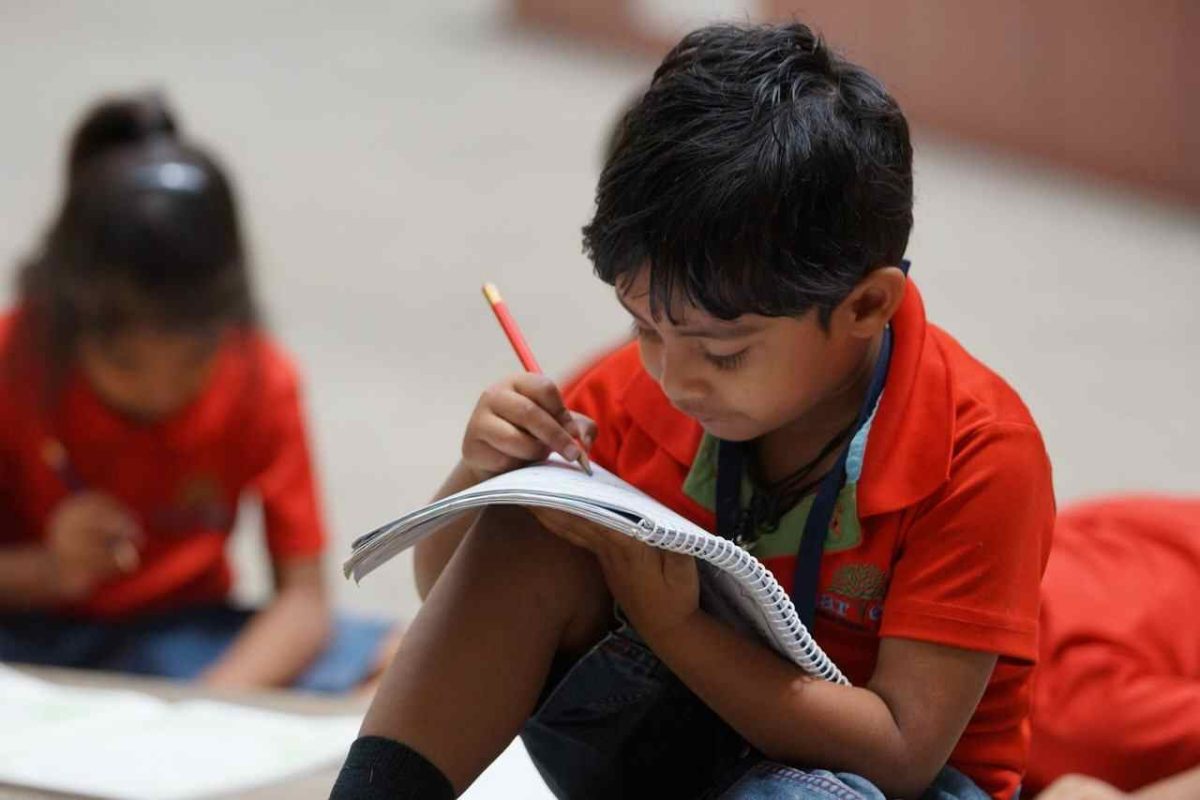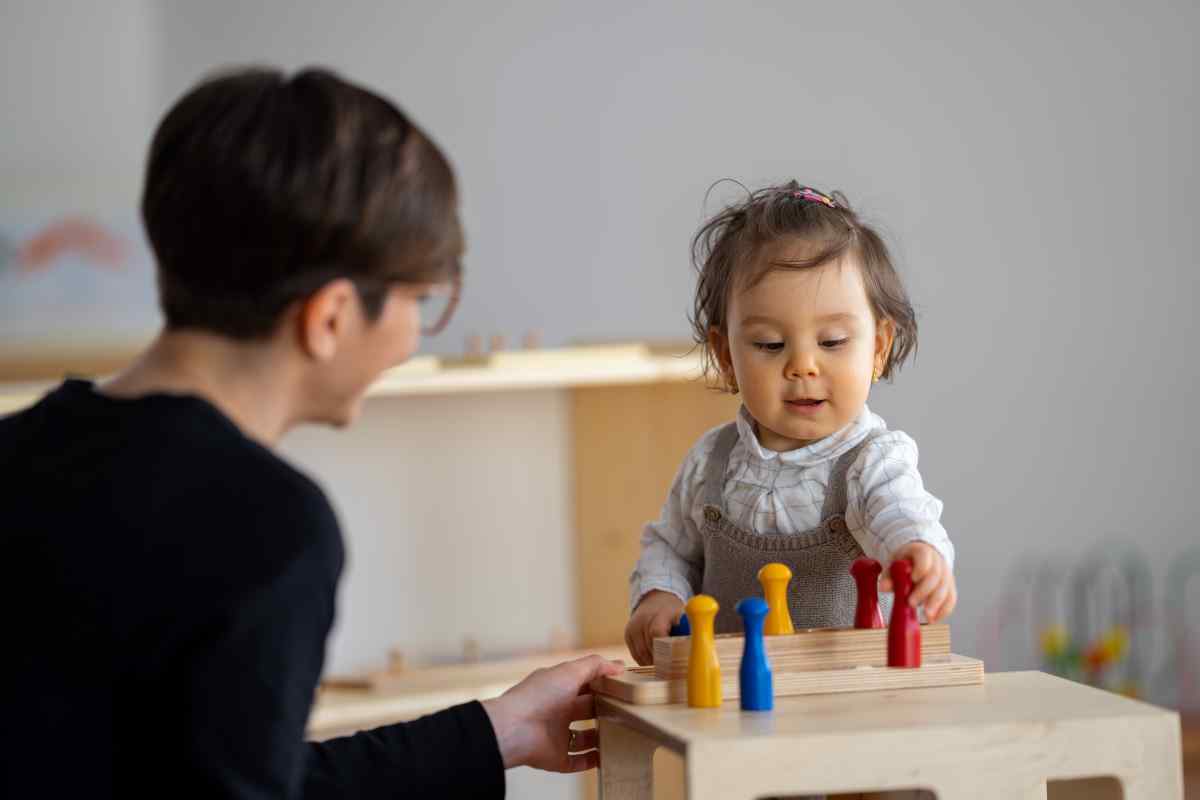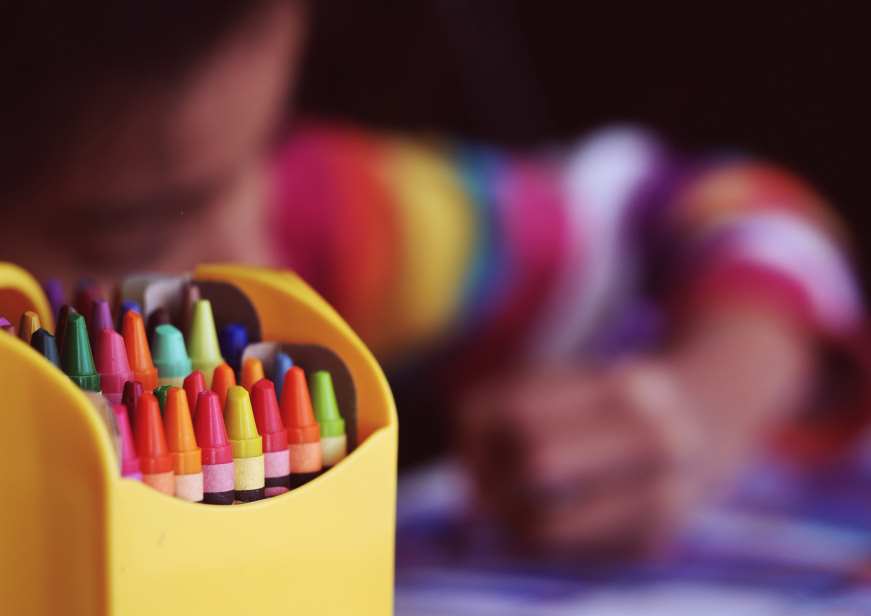Montessori education
Montessori at Home: A Comprehensive Guide to Child-Led Learning
Table of Contents
Introduction
The Montessori education philosophy emphasizes child-led learning, hands-on activities, and nurturing a child’s natural inclination to learn. The benefits of Montessori include building independence, critical thinking, and self-discipline. While Montessori schools provide an ideal environment, parents can adapt Montessori principles at home to promote their child’s development. This guide explains how to create a prepared Montessori environment, activities for different ages, and the advantages over traditional education. Embracing Montessori at home fosters a lifetime love of learning.
The Benefits of Montessori Education
Montessori education offers numerous benefits:
- Child-led learning: Children choose activities based on their interests and development. This intrinsic motivation fuels passion for learning.
- Independence and self-discipline: Montessori environments allow children to do tasks themselves. This builds confidence and responsibility.
- Critical thinking and problem-solving: Montessori materials allow open-ended exploration to discover solutions. This promotes analytic thinking.
- Social and emotional growth: Mixed age classrooms foster leadership skills and empathy. Children mentor each other.
- Joy of learning: Self-directed learning tailored to the child creates enthusiasm and curiosity. Kids are free to master topics at their own pace.
The Relevance of Montessori Principles at Home
While Montessori schools provide the ideal setting, parents can successfully integrate aspects of Montessori at home. Key principles like child-led learning, prepared environments, and respect for the child can enrich home learning. Montessori activities and materials make learning engaging. Observing your child helps determine their readiness and interests. Then you can apply Montessori wisdom tailored to your family.
Understanding Montessori Education
To properly adopt Montessori principles at home, it helps to understand the methodology. Here’s an overview:
- Child-centered: Activities are based on the child’s developmental stage and interests. Kids progress at their own pace.
- Prepared environment: Children learn through interacting with specifically designed Montessori materials that teach concepts concretely. Rooms are thoughtfully arranged.
- Multi-age classrooms: Age groups span 3 years allowing older kids to mentor younger ones. Mixed ages promote leadership and empathy.
- Child-led learning: Rather than direct instruction, Montessori teachers observe and guide. Children choose activities matching their developmental needs.
- Hands-on learning: Montessori materials engage multiple senses to provide a concrete foundation for abstract concepts.
- Development of the whole child: Montessori nurtures intellectual, physical, emotional, and social development. Life skills are emphasized.
Montessori philosophy values respect for the child, sensitive developmental periods, and nurturing a love of learning. The goal is raising independent, competent, responsible, and academically-prepared kids.
Adapting Montessori Principles for Home Learning
Certain modifications help make Montessori principles work at home:
- Dedicate specific times for independent learning with Montessori activities set up.
- Rotate a limited number of materials to maintain novelty.
- Establish simple ground rules and model respectful use of materials.
- Observe your child closely to determine interests and ability levels.
- Introduce new activities gradually based on the child’s development.
- Offer materials for a range of ability levels to maximize independence.
- Be flexible in incorporating Montessori principles within your family’s lifestyle.
The priority is providing opportunities for child-led exploration within a thoughtfully prepared environment.
Importance of Child-Led Learning
Core to Montessori is the principle that children are naturally driven to learn. Given proper conditions, kids teach themselves through self-directed interaction with the environment during critical developmental windows.
Montessori classrooms allow children freedom to select activities matching their interests and learning style. As kids gain competency, they progress to increasingly complex tasks, allowing a sense of achievement. Since the motivation comes from within, children immerse themselves in learning.
At home, you can foster self-direction by:
- Allowing your child to choose activities and pace
- Careful observation to identify passions
- Providing a stimulating environment
- Giving minimal assistance to encourage independence
- Stepping back to allow learning from experience
Trusting child-led learning promotes executive function, focus, confidence, and lifelong love of learning.

Preparing Your Home for Montessori Education
The physical environment plays a huge role in Montessori learning. Follow these tips to prepare your home.
Designing a Montessori-Friendly Environment
- Set aside a quiet space for focused learning. This can be a corner of a room, playroom, or homeschool classroom.
- Choose child-sized furniture like tables, chairs, shelves to promote independence.
- Integrate storage like baskets, bins, and shelves to organize materials.
- Display materials neatly on low shelves for easy access.
- Keep decor simple and include nature objects like plants, flowers, rocks.
- Ensure good lighting and ventilation.
- Allow space for floor activities.
- Create zones for different types of activities – reading, art, building etc.
The key is an uncluttered, orderly space that enables independence. Make adaptations based on room size and your child’s needs.
Selecting and Arranging Montessori Materials
Here are suggestions for equipping your Montessori-inspired home environment:
Practical life – Child-sized cleaning tools, dishes, cooking utensils, sewing cards
Sensorial – Pink tower, knobbed cylinders, sorting trays, tactile fabrics
Mathematics – Sandpaper numbers, spindle boxes, beads and counters
Language – Object boxes, movable alphabet, word building activities, books
Culture – Globes, nature specimens, music, world maps and flags
Art – Easels, paints, playdough, collage materials
Rotate materials to maintain freshness. Arrange on low shelves in categories. Keep each activity self-contained. Follow your child’s interests in acquiring materials. Focus on quality over quantity.
Setting Up a Prepared Environment
A prepared Montessori environment allows children to learn independently through purposeful play. Essential elements include:
- A consistent daily routine with large blocks of work time
- Clear ground rules for respectful use of space and materials
- Materials organized and displayed for easy access
- Hands-on activities matching developmental periods
- Minimal clutter and distraction
- Ordered progression of activities from simple to complex
- Beauty, nature and real-world objects
- Options for quiet focus or collaborative play
- Observation and gently guidance from parents
Careful set up allows your child to fully engage with activities at their own pace. Provide what captures your child’s interest and observe them carefully to adjust the space to their needs.

Montessori Activities for Home
Montessori activities offer learning through hands-on engagement. Here are activities tailored for different age groups:
Montessori Activities for Infants
- Grasping and shaking rattles or soft toys
- Reaching for high contrast mobiles and pictures
- Exploring treasure baskets filled with objects of different textures
- Observing themselves in unbreakable mirrors
- Listening to soft music and baby sign language
Provide opportunities for movement and sensory exploration. Respond promptly when communicating needs.
Montessori Activities for Toddlers
- Scooping and pouring dry beans or rice
- Opening/closing containers and filling/emptying activities
- Simple household chores like dusting or sweeping
- Large wooden peg boards and shape sorters
- Naming objects in picture books and sensory bottles
- Finger painting with pudding or jello
Focus on developing coordination through practical life skills. Introduce simple language and sensory activities.
Montessori Activities for Preschoolers
- Care of plants – watering, repotting, observing growth
- Food preparation – mixing, cutting soft foods with child safe knife
- Dressing frames and buttoning/zipping activities
- Sandpaper letters and alphabet matching cards
- Object boxes for classification of nature items or vocabulary
- Listening games and songs, puppet shows
Advance motor skills, early reading and math, language, and concentration. Allow creativity through arts, crafts and imaginative play.
Daily Montessori Routines
- Morning greeting activity of handshaking, singing, or conversation
- 3 hour morning work period for self-directed learning
- Clean up time modeled by adults
- Snack and outdoor time
- Afternoon work period
- Story and sharing time
- Transition warnings before changing activities
Consistency, modeling respect, and clear expectations aid development. Follow the child’s energy levels.
Benefits of Montessori at Home
Pursuing Montessori principles at home provides many advantages for kids:
Enhanced Independence and Self-Discipline
The prepared environment enables kids to select activities, complete tasks, and care for themselves and the space. This fosters key life skills like independence, concentration, coordination, and self-regulation.
Fostering Critical Thinking and Problem-Solving
Montessori materials allow open-ended exploration. Children strengthen analytic thinking abilities by classifying objects, sequencing steps, comparing/contrasting, finding patterns, and breaking down concepts from concrete to abstract.
Encouraging a Love of Learning
Self-directed learning driven by intrinsic motivation breeds a love of discovery. Kids freely follow passions and experience the satisfaction of improving new abilities. This engages them fully in pursuing knowledge.
Social and Emotional Development
Mixed age groups promote leadership as older kids mentor younger ones. Collaborative play teaches negotiation, compromise, and conflict resolution. Children gain confidence through accomplishments.
Learning through purposeful work in a thoughtfully prepared environment enriches all aspects of development. The benefits last a lifetime.

Montessori vs. Traditional Education
While both approaches aim for academic success, Montessori and traditional schooling differ significantly in philosophy and methods:
| Montessori | Traditional |
|---|---|
| Child-led | Teacher-directed |
| Hands-on self-correcting materials | Textbooks and worksheets |
| Multi-age classrooms | Same-age classrooms |
| Self-paced learning | Whole class instruction |
| Observation and guidance | Lecturing and testing |
| Intrinsic motivation | Extrinsic rewards like grades |
| Holistic education | Academically focused |
Montessori encourages children to learn independently and problem-solve during critical developmental windows. Traditional education relies on curriculum standards and testing to assess mastery.
Each approach has upsides. Montessori fosters deep engagement through choice and hands-on activities. Traditional provides structured content delivery and peer collaboration. Blending philosophies can give children the benefits of both models.
Implementing Montessori Principles as Parents
Parents play a key role in Montessori education at home. Here’s how to support the process:
- Observe your child carefully to understand their development
- Prepare the home environment to enable independence
- Model respect, care, and concentration on work
- Allow child-led exploration with Montessori materials
- Offer sensitive guidance when needed without over-directing
- Follow the child with activities based on interests and readiness
- Use natural consequences for misusing materials
- Collaborate on care of the home environment
- Foster independence in self-care tasks
- Communicate with empathy and understanding
- Provide large blocks of uninterrupted work time
- Have patience in allowing skill mastery at their own pace
Your guidance helps children gain the benefits of Montessori at home while respecting their unique learning path.
Supporting Your Child’s Learning Journey
While Montessori allows children to direct their own activity, parents still need to provide parameters, guidance, and support.
Have age appropriate expectations. Break tasks into manageable steps. Celebrate small successes to encourage a growth mindset. Observe when your child needs a refresh with new materials. Schedule regular family meetings for collaborative problem solving.
Learning is a partnership between parent and child. Offer the right blend of freedom and structure.
Common Challenges and Solutions
Challenge: Child won’t engage with Montessori materials.
Solution: Observe carefully to assess interests and developmental level. Introduce enticing activities catered their age, abilities and learning style.
Challenge: Messy work environment
Solution: Model tidying up. Use bins, shelves and visual labels to define places for everything. Schedule regular clean-ups.
Challenge: Difficulty transitioning from playtime.
Solution: Set expectations and give warnings before transitions. Use consistent scheduling and routines to build cooperation.
With close observation and a nurturing approach, you can overcome common Montessori hurdles. Each child’s needs are unique.
Resources for Montessori at Home
Here are helpful resources to continue your Montessori journey:
Montessori Books and Publications
- The Montessori Toddler by Simone Davies
- Montessori from the Start by P. Polk Lillard
- The Montessori Preschool at Home by M. Lillard
- Montessori International Magazine
- NAMTA Journal (North American Montessori Teachers Association)
Online Montessori Communities and Forums
- Facebook groups like Montessori At Home
- Reddit groups like r/Montessori
- Montessori Mondays blog
- Montessori Parenting website
Montessori Materials Suppliers
- Montessorium.com
- Michael Olaf Montessori Company
- Discount School Supply
- Nienhuis Montessori
- ETC Montessori
Utilize books, websites, communities and qualified suppliers to learn more and get activity ideas.

Success Stories and Testimonials
Many families find tremendous benefits from Montessori education at home. Here are inspiring real-life experiences:
Parent A said:
“My daughter has blossomed since we began using Montessori materials at home. She gathers her activities each morning and works independently for 2-3 hours happily exploring letters, math, and practical life skills. I’ve noticed huge improvements in her concentration, confidence, and independence.”
Parent B shared:
“As a busy single parent, I wondered if I could manage Montessori home education. But setting up our learning space and materials ahead of time enabled my son to direct his own learning while I worked from home. He loves the independence and responsibility. And I see him learning so much more deeply than at traditional preschool.”
Parent C wrote:
“After learning about sensitive periods of development, I realized Montessori principles would help my toddler master new abilities. I prepared our living room with practical life activities and saw her flourish! She delights in pouring, scooping, opening/closing containers. Her hand-eye coordination has improved remarkably.”
Observing the profound impact of Montessori education continues to inspire families to embrace these timeless principles.
Conclusion
The Montessori approach provides an enriching complement to learning at home. Core tenets like child-led exploration, prepared environments, concrete learning materials and respect for developmental stages enable children to fulfill their innate passion for discovery and growth.
Preparing your home thoughtfully, observing your child’s unique interests, and facilitating independent learning through engaging multi-sensory Montessori activities fosters success across all areas of development. Kids gain confidence, focus, self-discipline and a lifelong enthusiasm for knowledge.
Whether you fully adopt the Montessori methodology or integrate select principles, this child-centered philosophy can flourish in any family. Begin Montessori-inspired learning at any age, adjust practices based on your child’s needs, and refine the environment over time. Discover for yourself the incredible rewards of supporting your child’s incredible natural abilities. The journey brings joy to the whole family!
FAQs
What is Montessori education?
Montessori is an educational philosophy that emphasizes child-directed learning through hands-on activities, multi-age classrooms, and specially designed Montessori materials that encourage exploration. The approach views children as naturally eager to learn, so the environment is prepared to allow them to pursue interests at their own pace.
How can I implement Montessori principles at home?
Create a prepared environment with child-sized furniture, materials neatly arranged on low shelves, and dedicated times for independent learning. Observe your child carefully, allow them to choose activities that match their developmental level, and avoid over-directing. Model respect and care for the environment.
What materials do I need for Montessori at home?
Recommended Montessori materials include activities for practical life like pouring, scooping, sorting; sensorial materials like the pink tower and fabrics; math materials like beads and sandpaper numbers; language materials like movable alphabets and books; and cultural objects like maps, globes, and nature items.
Are there age-specific Montessori activities?
Montessori activities are tailored for different developmental stages. For infants, provide grasping/shaking toys, mobiles, mirrors, and music. For toddlers, introduce practical life skills like sweeping, opening/closing containers, and basic language. For preschoolers, advance to care of plants, food prep, puzzles, arts/crafts.
What are the benefits of Montessori at home for children?
Montessori education fosters independence, concentration, coordination, self-discipline, problem-solving, critical thinking, and a lifelong love of learning. The prepared environment enables kids to develop key life skills through independent exploration during critical developmental windows.
References
https://www.guidepostmontessori.com/blog/the-ultimate-guide-to-montessori-at-home
https://www.mamashappyhive.com/montessori-at-home-resource-guide/
https://reachformontessori.com/montessori-homeschool-curriculum/
https://masterygenius.com/blog/montessori-homeschool/
https://www.rocketcitymom.com/blog/2023/07/25/7-tips-incorporating-montessori-at-home/
https://www.montessorinature.com/child-led-play/

